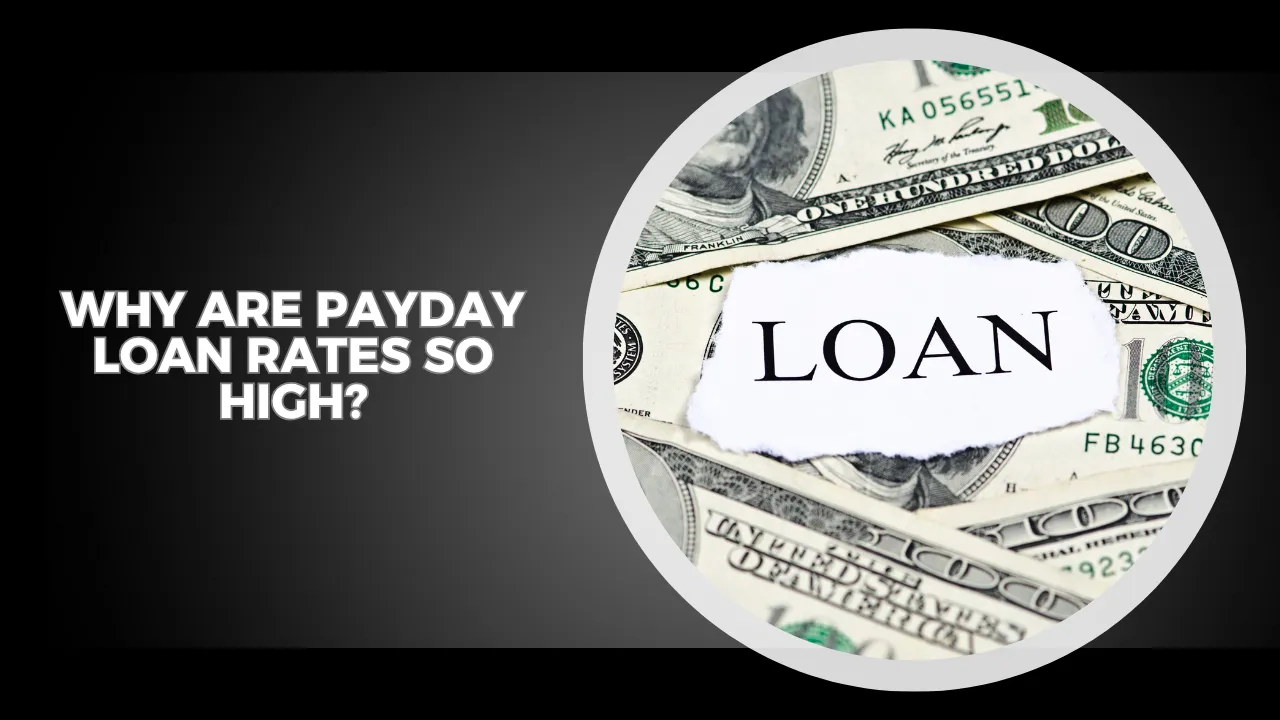If you’ve ever looked into short-term lending, you’ve probably noticed one striking feature: payday loans often come with incredibly high interest rates. Borrow £200 and repay a few weeks later, and you might owe much more than you borrowed. It’s easy to wonder why lenders charge so much, and whether these rates are justified or exploitative.
Having studied consumer finance and worked with people trying to rebuild their credit, I can say that payday loans are not as simple as “bad loans.” They serve a purpose, but their pricing is complex — driven by risk, regulation, and the real-world costs of lending to people who often have nowhere else to turn. Let’s explore why payday loan rates are so high, and what borrowers can do to make more informed financial decisions.
Understanding the True Cost of Payday Loans
A payday loan is designed to be a short-term solution — usually borrowed for a few weeks or until your next paycheck. Unlike bank loans, payday lenders don’t require extensive credit checks, long approval processes, or collateral. They focus on accessibility and speed.
That convenience, however, comes at a price. Lenders charge much higher interest rates than banks or credit unions because they are taking on greater risk. Many payday borrowers have poor credit or unstable income, which makes defaults more likely.
If a traditional bank were to lend to this same group, it would probably charge high rates too — or simply deny the loan. Payday lenders fill that gap, and their pricing reflects both risk and short repayment periods. Because these loans last only days or weeks, lenders express costs as an annual percentage rate (APR). This can make the rate look enormous — thousands of percent — even though the actual short-term interest might only be £15 or £20 on a £100 loan.
It’s also worth noting that payday loans are tightly regulated in the UK. The Financial Conduct Authority (FCA) caps how much a lender can charge per day, as well as the maximum total repayment amount. Despite these rules, many borrowers still find themselves struggling with repayment cycles. That’s where awareness and responsible borrowing become essential.
Comparing Payday Loans to Traditional Borrowing
When you compare payday loans to credit cards, personal loans, or overdrafts, the differences in cost are striking. A personal loan from a bank might have an APR of 10% or 15%. Payday loans, on the other hand, can easily exceed 1,000% APR.
This doesn’t mean lenders are simply gouging customers. The APR metric can be misleading because it assumes you’ll borrow the money for a full year. Most payday loans last only a few weeks. The flat fees, processing costs, and default risks are concentrated into that short timeframe.
To put it another way, payday lenders are pricing time and risk, not just money. They’re operating in a high-risk environment where even small delays or defaults can wipe out profits. Many lenders also operate online, where they must absorb fraud losses and compliance costs.
For borrowers, the key is to compare total repayment amounts rather than focusing solely on APR. Reputable sources like payday loans uk offer clear explanations, examples, and tools to help you understand how much you’ll really repay before agreeing to a loan. Transparency is critical — it helps consumers make informed decisions instead of being surprised by costs later.
The Risk Factor: Why Lenders Charge More
Payday lenders cater to individuals who often have limited financial options. These borrowers might have a history of missed payments, low income, or little credit history. From a lender’s perspective, each loan is a gamble.
The default rate in the payday lending industry is much higher than in conventional finance. If one in five borrowers fails to repay, lenders must recover those losses through higher rates for everyone else. That’s why responsible lenders constantly evaluate affordability — requiring proof of income or performing quick credit checks to ensure borrowers can repay.
Another factor driving up costs is the lack of collateral. In secured loans, like mortgages or car loans, lenders can seize the asset if you default. With payday loans, there’s no such security, meaning lenders have fewer ways to recover their money. High interest helps offset this vulnerability.
Operational and Regulatory Costs
Many people don’t realize how expensive it is to run a regulated lending business. Payday lenders must comply with strict laws, maintain customer service teams, perform identity checks, and handle payment disputes. They also need to fund marketing, technology, and risk analysis systems.
In the UK, payday lenders must register with the FCA and meet ongoing compliance requirements, which include reporting data, undergoing audits, and following affordability checks. These administrative layers add significant cost, all of which contribute to the rates consumers see.
Regulators have introduced measures to protect consumers, such as capping daily interest and limiting total repayments to no more than twice the borrowed amount. These safeguards have dramatically reduced predatory lending, but they’ve also made it harder for smaller lenders to operate profitably — further concentrating the market among a few large players who can handle the overhead.
The Human Element Behind High Rates
At the heart of the payday loan debate is the borrower’s experience. Many people who turn to payday loans do so out of urgency: a broken boiler, an unexpected medical bill, or a late paycheck. For them, access matters more than affordability.
In these situations, lenders act as last-resort providers of liquidity. They take on customers whom mainstream financial institutions reject, and that risk is priced in. Still, responsible lenders are careful to avoid pushing borrowers into debt spirals. They promote repayment plans, offer extensions, and sometimes refer customers to debt-advice services.
It’s easy to criticize payday lenders for high rates, but the reality is more nuanced. Without them, many people would have no access to credit at all. The challenge is ensuring that those who borrow understand the real cost and have a plan to repay.
Alternatives to High-Cost Payday Loans
If you find yourself needing quick cash, payday loans aren’t the only option. Credit unions, community lenders, and certain online fintech platforms now offer small, short-term loans at lower rates. Some employers even provide salary advance programs that let you access part of your paycheck early without borrowing.
For those with poor credit, building a positive financial history can open doors to better loan terms over time. Setting up automatic savings, paying bills on time, and using credit-builder cards are small but effective steps toward financial freedom.
Government-backed programs and local charities also offer emergency grants or interest-free loans to those in crisis. It’s worth exploring these before resorting to high-cost lending.
Final Thoughts: Transparency and Choice Matter
Payday loans occupy a controversial but important place in modern finance. Their rates are high because they’re designed for high-risk, short-term lending — not because lenders are indifferent to borrowers’ struggles. When regulated properly and used responsibly, payday loans can be a useful bridge in a moment of financial stress.
The key is transparency and informed choice. Borrowers should always know what they’re agreeing to, and lenders must continue improving clarity, affordability checks, and repayment flexibility. High rates may be unavoidable, but confusion and exploitation shouldn’t be.
With responsible borrowing, education, and regulation, payday lending can serve its purpose without trapping consumers in cycles of debt. Understanding why rates are high is the first step toward using credit wisely — and ultimately, toward not needing it at all.




